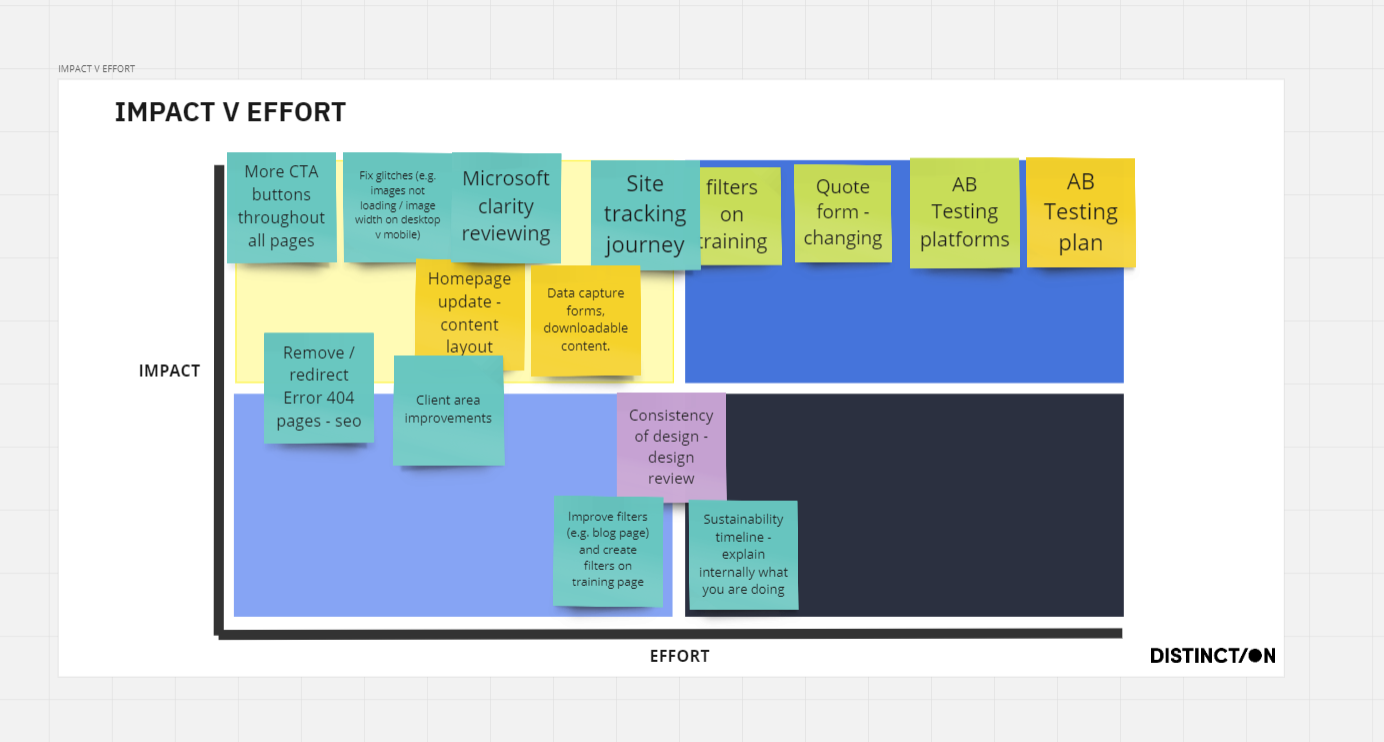

Research from the Journal of Open Innovation found the ability to identify innovative and effective solutions to complex problems not only improves operational efficiency, but also strengthens the position of organisations in the market.
In this article, we explore the strategic potential of problem-based strategy in navigating your business challenges and improving business performance.
We also discuss the benefits and a process you can use to utilse problem-based strategy.
Problem-based strategy (also known as issue-based strategy) is not just about fixing symptoms; it's about identifying and addressing underlying issues that drive problems.
It is a dynamic approach that promises quicker problem-solving by diagnosing the root causes head-on.
It is a change in mindset from reactive problem-solving to proactive, strategic problem orientation.
This approach can help your team to go from problem to solutions in a short space of time.
Problem-based strategies in business have numerous benefits that can lead to enhanced performance, growth, and innovation. Here’s how they can impact your organisation:
Problem-based strategies drive the development of solutions directly tailored to address specific issues. This focus helps in effectively solving problems reducing the risk of them reoccurring later.
Businesses that are adept at solving problems can outpace their competitors by being more responsive to challenges and more innovative in their solutions. This can lead to gaining market share and developing unique selling points in your industry.
This streamlined approach can lead to faster turnaround times and increased efficiency meaning you see results more quickly as the solutions can be prioritised by the level of impact they will have.
Companies that consistently engage in problem-solving are better prepared to adapt to changes in the market, technology, and customer preferences. This adaptability is crucial for survival and growth in today’s fast-paced business environment.
Implementing a problem-based strategy can be done by any level of the business as long as they deeply understand the problem meaning managers can solve together with the employees they manage. This empowerment can lead to higher job satisfaction, retention, and productivity across the team.
The approach can be broken down into three stages:
To successfully address business problems, it's essential to pinpoint the root causes so the proposed solutions will be successful.
This task can be complex due to various factors that influence how we perceive, diagnose, and suggest solutions to problems.
These types of problems may be uncovered in monthly or quarterly reports or in leadership meetings. They could also be discovered by any employee. A culture of curiosity is important in order to solve problems.
The issues at this stage may be more general such as leads or sales being lower or higher customer churn than expected.
At this stage more analysis will be required to better decide the root cause of the problem.
The outcome of the diagnosis stage is turning general problems into a strategic question that solutions can be generated for.
A great way of ensuring you have defined the problem is formulate it into a strategic question.
A strategic question always starts with a "How might we" and is a form of inquiry used in design thinking to open creative thinking and explore new possibilities.
These questions are intentionally framed to be open-ended and optimistic, encouraging a solution-oriented approach to challenges.
Some examples include:
The question should allow you to easily decide which stakeholders need to be involved and open ended enough that everyone can provide creative solutions.
Once you have your strategic question you can start on generating solutions that solve that problem.
At Distinction we used a whiteboard tool called Miro to host these sessions remotely, but you can also use a whiteboard and sticky notes in a meeting room.
We recommend using a meeting room only if you have everyone available in person as it can be difficult for everyone to voice their opinions otherwise.
Ideal numbers would be a minimum of two and a maximum of six to ensure everyone can get their points across.
The Harvard Business Review found that cognitively diverse teams can also solve problems faster so try and mix teams up where possible.This will allow the generation of more creative solutions.
We have provided an example board we have used to help with a CRO problem.

The first part of the session is for everyone to come up with as many solutions as possible that answer the strategic question. These are listed on the middle board.
If you have too many solutions you can vote to just focus on what you believe as a group are the most important.
Once you have a list of solutions the next step is to prioritise them.

In our example we have used an impact vs effort matrix to help rank the importance of each solution. The top left corner is for solutions that are low effort and high impact.
These are solutions you should look to implement immediately whereas items that are high effort and low impact should be avoided entirely.
Solutions that fall under medium effort and medium impact should still make up part of your roadmap.
These solutions will help formulate your roadmap and the implementation of your strategy.
The next step is to estimate the impact and effort of all the solutions you have generated.
Impact is how much of a positive effect the solution have in solving the problem raised as a strategic question.
To keep it simple at this stage you could focus on just high or low impact. In our example some solutions where ranked as medium impact so they were placed in the middle of the matrix.
If you are struggling to know how long you think something could take some techniques include:
Here are some best practices to ensure your diagnostic sessions go smoothly. We also hosted a webinar on the topic which goes into more detail.
With over 20 years of experience in designing and facilitating diagnostic sessions, we are well-equipped to help you identify and address your business challenges.
Please don't hesitate to get in touch if you would like assistance with this process.
A business roadmap can be visualised in various formats such as flowcharts, Gantt charts, or specialised roadmap software, making it accessible and understandable to stakeholders across the organisation.
We have covered how you can create your roadmap if you need additional support.
The hardest part of solving a business problem is defining the problem correctly.
Once a problem s diagnosed accurately problem-based strategy can provide a efficient way of driving growth in companies whose aims are rapid growth.
If you have a business problem that you want to talk through, get in touch today.